We were lucky to catch up with Zan Lombardo recently and have shared our conversation below.
Zan, appreciate you joining us today. We’d love to hear about a project that you’ve worked on that’s meant a lot to you.
For 25 years, I had loved teaching art in public schools, calling my job “The Happy Little Planet.” But eventually that dream job made me increasingly unhappy–shorter class periods, more classes with more students, extra duties, shrinking budgets, and the arts not even called essential. I found myself with ten years remaining until retirement and growing frustration. The prospect of bringing that despair home every day and venting to my family for a decade would not constitute artistic behavior to me, so I created a safe, physical space to take those anxieties and transform them.
In an effort to expand my feeling of possibility, I came across a giant inked scroll painting stretching across ten pages of a magazine by Chinese American artist Dan Liu. “I could do that,” I thought. Inspired, I immediately bought the largest piece of paper I could find, a 30-foot roll of watercolor paper. The woodshop teacher kindly built to my specifications a 4-foot square table topper with a bar on either side to support the scroll. Supported by my family, I set my art table up in the most spacious room of my house.
With no sketch or formal plan in mind, I invented two guidelines for the transformational work ahead: 1) Treat myself with unconditional love–never question, second-guess or erase anything I might want to draw. 2) Make everything relate to everything else. I did not want my long scroll to look like it was created in 4-foot sections when it was complete, even if that was the reality. To accomplish this, I drew with a broken line and every time I came to a break in the line, I used it as an opportunity to branch out and connect to something else; hence, the title: “Everything is, Indeed, Reaching Out to Everything Else.”
It took me two years to draw and two years to paint. While being simultaneously a wife, mother and teacher, as an artist I grabbed ten minutes while the pasta boiled and 30 minutes while the laundry tumbled to do my art. I worked to release frustration and when I was gripped by an inspirational idea. What transpired was transformational.
Giving myself permission to process my frustration by creating art that I would love unconditionally, helped me ease up and expand. And in that action, I created a style all my own. The safe space of drawing and painting recharged my passion for teaching and gave me new ways to share with my students. Years later, I am still riding that wave of enthusiasm for transformational art.


Awesome – so before we get into the rest of our questions, can you briefly introduce yourself to our readers.
My artistic mantra has always been “Keep expanding out into the universe”, as if something within blossoms to join with something bigger than itself. But leading up to my first giant watercolor, I had worked very small–2″ x 2″ to be exact. My claim to fame had been “Eye to Eye” portraits done first between Russian and American Quakers during the Cold War before the fall of the Soviet Union, then paintings of students and staff from rival schools, and finally with the members of the Senegal-America Project led by percussionists Massamba Diop and Tony Vacca. I may have painted tiny but had always brought the big intent of helping people cross borders into more positive relationships.
Transitioning from working within 2-inch squares to expanding onto scrolls of 30 feet was easy. In a 30-foot painting, the surface breaks up into thousands of small shapes. I treat every shape as an interesting watercolor in and of itself, allowing the liquid colors to linger in uncontrolled puddles. The resulting blooms energize the surface and allow the image to breathe, creating literal inspiration. I have been told that my artwork brings hope to the downhearted. I know it certainly transformed my own frustrated situation into something full of wondrous possibilities.
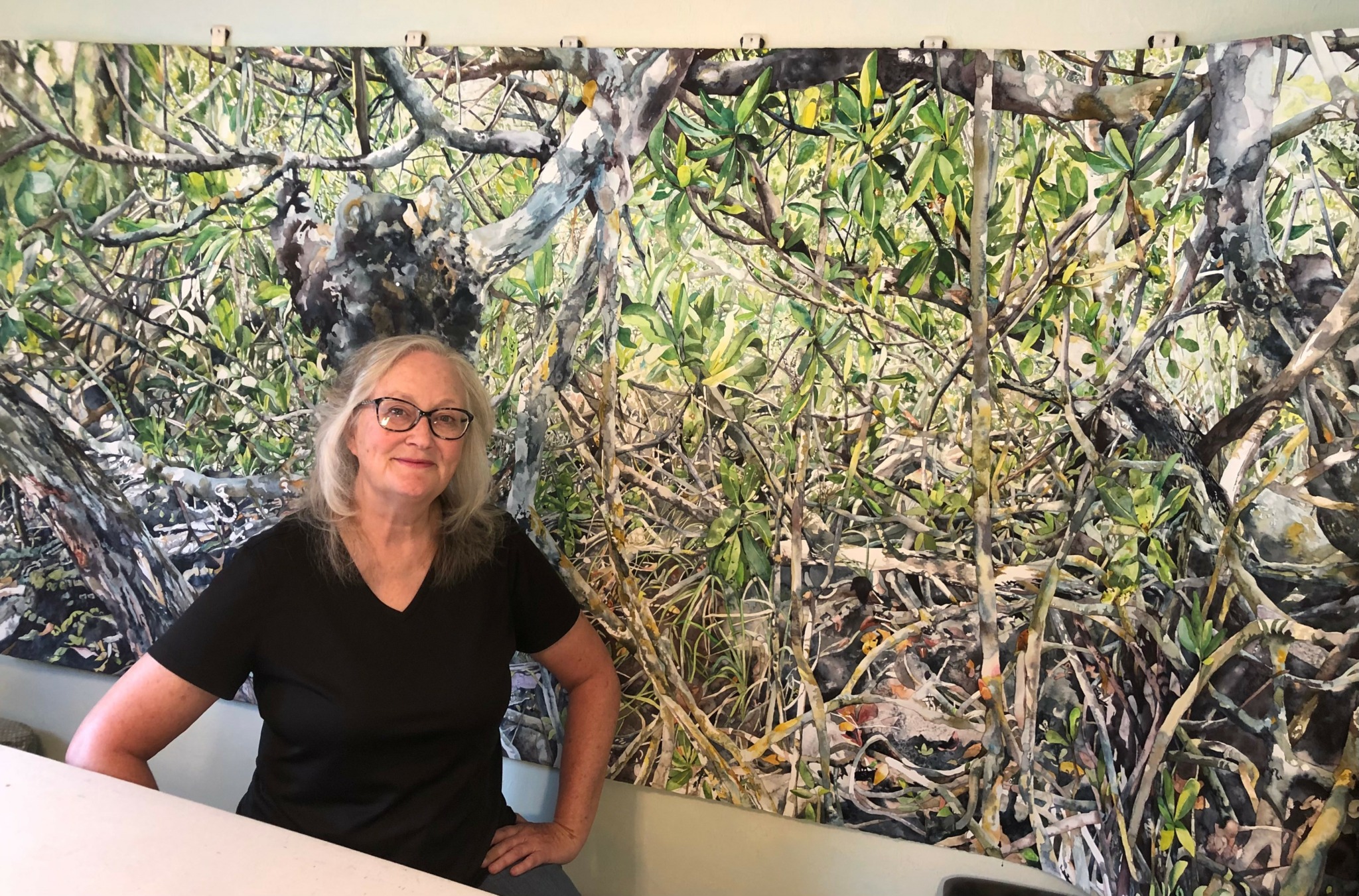
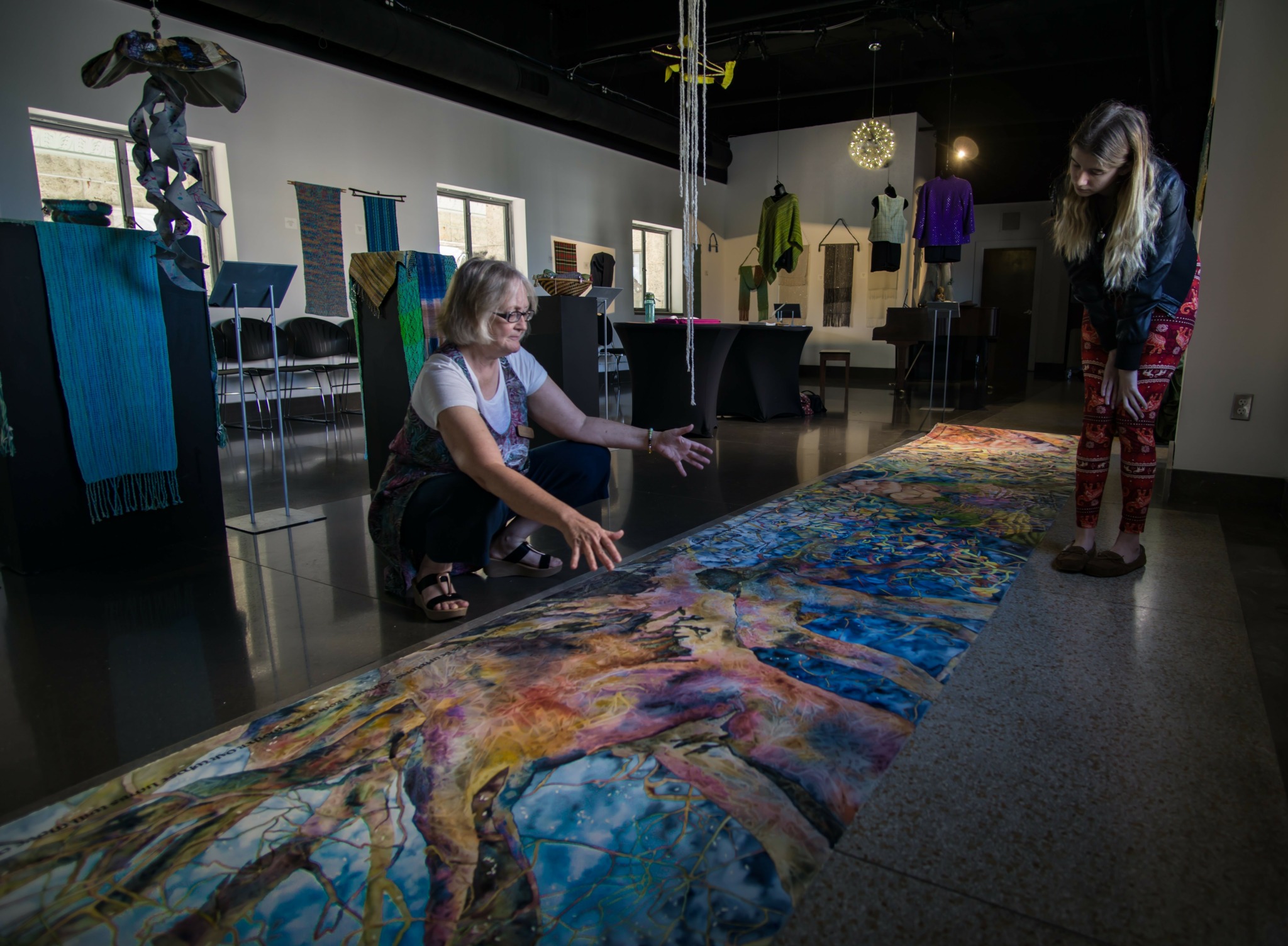
Let’s talk about resilience next – do you have a story you can share with us?
Three and a half years into work on that first 30-foot watercolor, I took a sabbatical from teaching and made arrangements to bring the painting in for critiques once a month at a local university. The first art professor to see it nearing completion walked its length, listened to me explain my process and then said flippantly, “Well, this work is a long, visual run-on sentence. If you’re not present to tell your stories, no one will understand it. What this painting needs is a 30-foot title,” and he walked away. Stunned, I immediately realized that after thinking for so long that I did not have any idea what it all meant because it was just me releasing frustration, at that moment I actually DID know. I chose a sonnet structure, and within 3 weeks had written a powerful 30-foot poem on a ribbon and attached it to the scroll for my first public presentation.
However, that makeshift solution was not beautiful enough for me. I began taking master classes from renowned calligrapher, Sheila Waters. After two more years of study and diligent practice under her brilliant tutelage, I came to the conclusion that I would never be skilled enough to letter my poem onto my painting. When I told Sheila and asked if I could pay her to do it, she laughed and said, “I wondered how long it would take you to figure that out. I will never paint as beautifully as you, and you will never do calligraphy as beautifully as me.” I brought my special table and my scroll to her studio and at age 86, Sheila Waters lettered my poem in Uncial script perfectly on my original watercolor using indelible ink. Impressed, I paid her twice what I had promised.

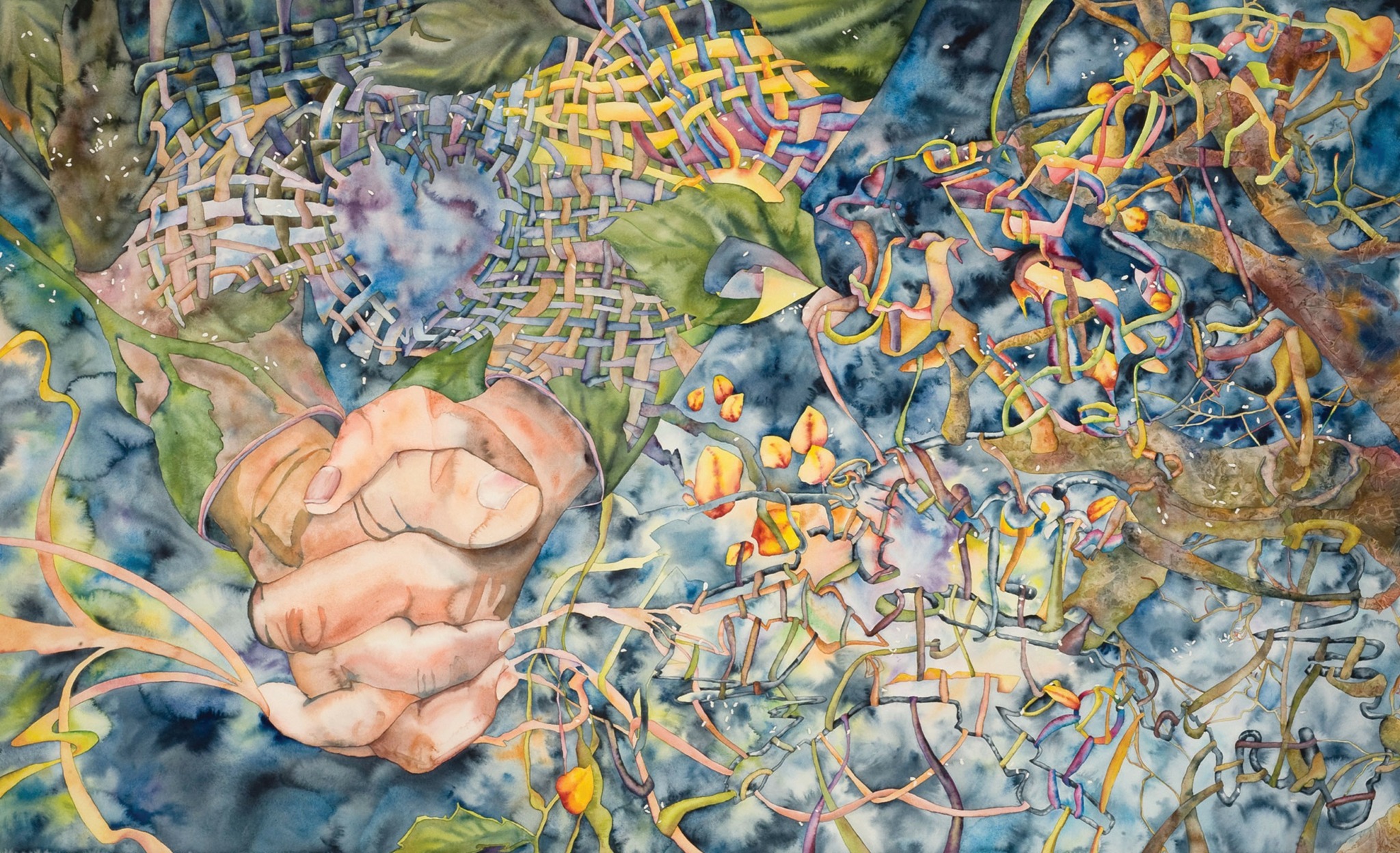
How did you build your audience on social media?
Sharing in-progress painting details on Facebook built my biggest audience and has evoked the most appreciation. Because one of my watercolors can take up to 9 months to complete, only sharing the end result would leave giant silences in my online presence. By sharing steps and struggles, and inviting them to join me inside my process, inside my tiny private studio, inside my heart, art becomes accessible to many more people. Bearing witness to the creative process includes them. This makes me accessible and keeps me humble.
For over 15 years I have maintained a simple art website (ZanLombardo.com), maybe getting a couple hundred views during that time and a spattering of emails from people who admired my work. Then in 2025, I got an email out of the blue from the curator of a Florida gallery offering me a one-woman exhibit. Within minutes, I responded with a definite yes. They said they had seen my website and wanted to talk. I showed up at their office, I was ready with my printed personal information, artist statement, curricula vitae, a list of artwork with sizes/media/prices and even a 3-D mockup of the installation. The curator was awash with emotions of surprise, amusement, relief. I had exceeded their expectations by coming with everything in hand. They confessed I had been a third or fourth choice after none of the other younger artists contacted had responded. Some of them hadn’t even provided a method of contact on their social media. I did. I responded. I came prepared. I was enthusiastic. They were expecting a phone call. I came in person. And now, at age 70, I will have my first one-woman show that is also a retrospective–all my best works shown simultaneously.
My advice: make yourself accessible and be available.
Contact Info:
- Website: https://ZanLombardo.com
- Facebook: Zan Henigan Lombardo
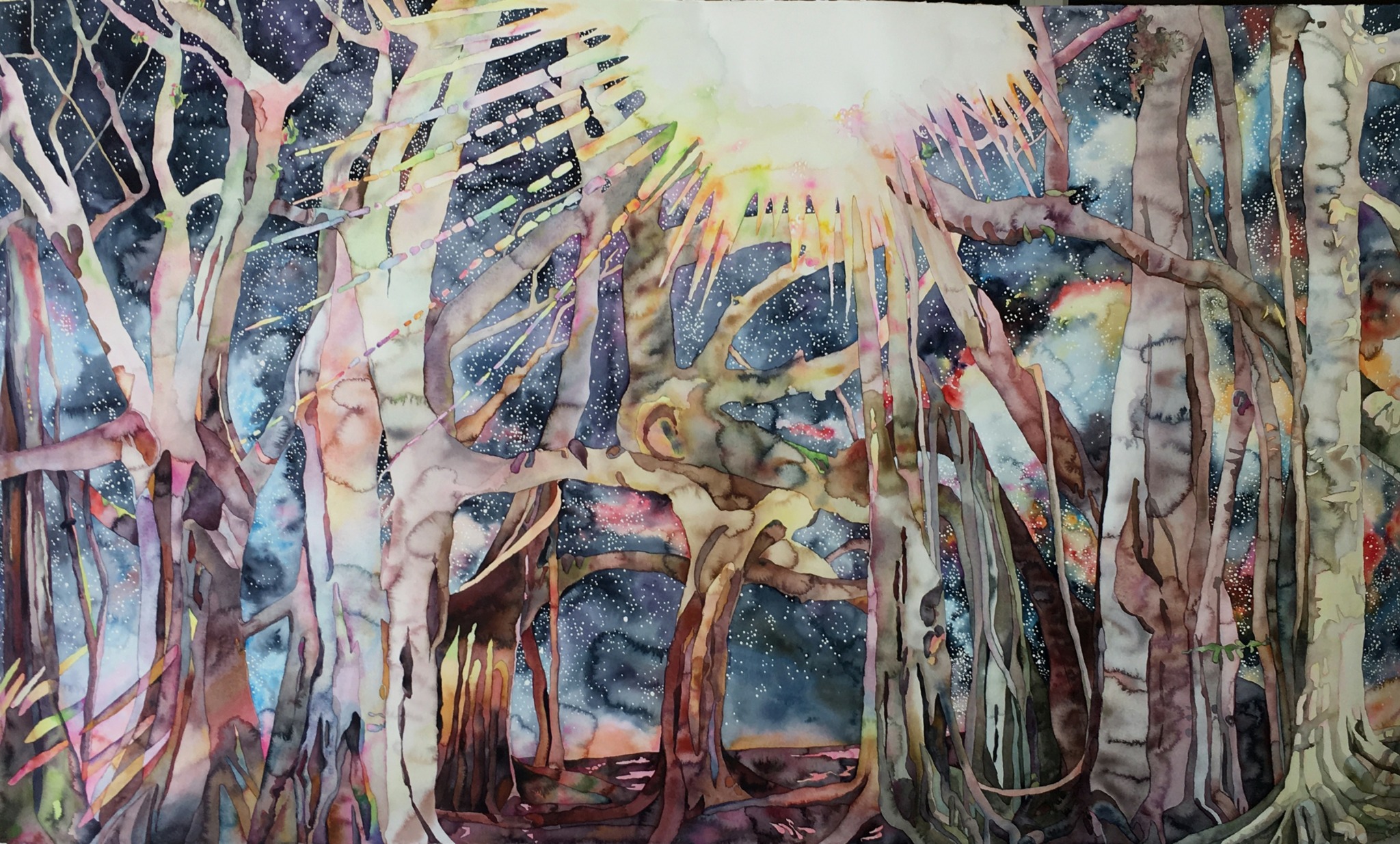
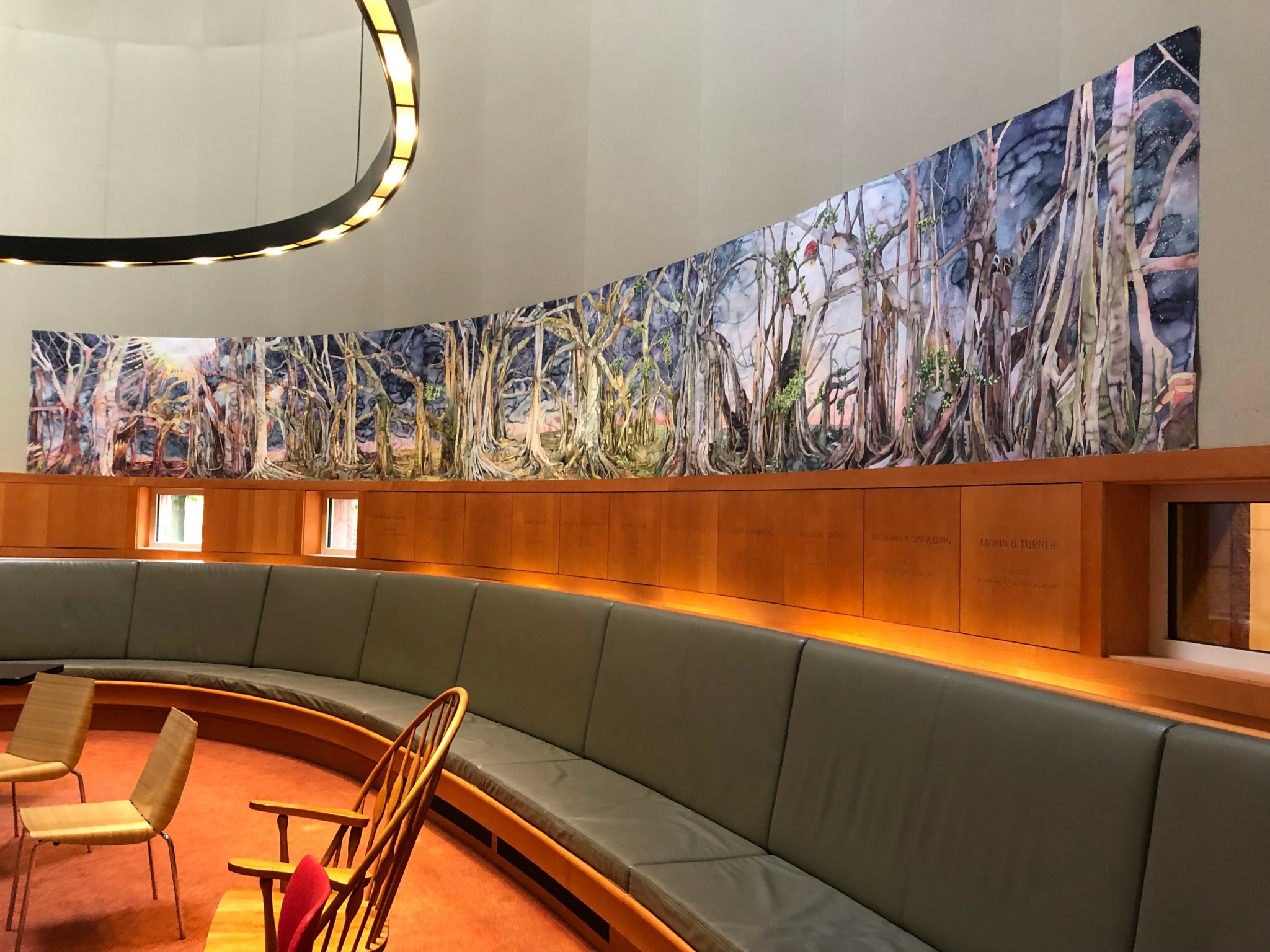
Image Credits
Zan Lombardo
Bob Lombardo
Kimberly Ellison
Deborah Zwetsch


